
Aguirre, the Wrath of God is a 1972 epic historical drama film produced, written and directed by Werner Herzog. Klaus Kinski stars in the title role of Spanish soldier Lope de Aguirre, who leads a group of conquistadores down the Amazon River in South America in search of the legendary city of gold, El Dorado. The accompanying soundtrack was composed and performed by kosmische musik band Popol Vuh. The film is an international co-production between West Germany and Mexico.

Klaus Kinski was a German actor. Equally renowned for his intense performance style and notorious for his volatile personality, he appeared in over 130 film roles in a career that spanned 40 years, from 1948 to 1988. He is best known for starring in five films directed by Werner Herzog from 1972 to 1987, who would later chronicle their tumultuous relationship in the documentary My Best Fiend.

Nosferatu the Vampyre is a 1979 gothic horror film written and directed by Werner Herzog. It is set primarily in 19th-century Wismar, Germany and Transylvania, and was conceived as a stylistic adaptation of Bram Stoker's 1897 novel Dracula, taking the title, setting and titular character's design from F. W. Murnau's 1922 film Nosferatu: A Symphony of Horror. The picture stars Klaus Kinski as Count Dracula, Isabelle Adjani as Lucy Harker, Bruno Ganz as Jonathan Harker, and French artist-writer Roland Topor as Renfield. There are two different versions of the film, one in which the actors speak English, and one in which they speak German.

The Great Silence is a 1968 revisionist spaghetti Western film directed and co-written by Sergio Corbucci. An Italian-French co-production, the film stars Jean-Louis Trintignant, Klaus Kinski, Vonetta McGee and Frank Wolff, with Luigi Pistilli, Mario Brega, Marisa Merlini and Carlo D'Angelo in supporting roles.
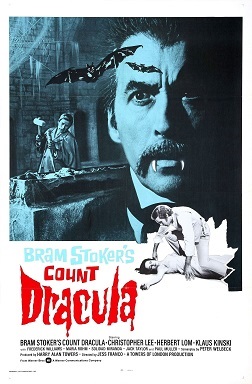
Count Dracula is a 1970 horror film directed and co-written by Jesús Franco, based on the novel Dracula by Bram Stoker. It stars Christopher Lee as Dracula, Herbert Lom as Van Helsing, and Klaus Kinski as Renfield, along with Fred Williams, Maria Rohm, Soledad Miranda, Paul Muller, and Jack Taylor.

The Secret of the Black Widow is a 1963 West German crime film directed by Franz Josef Gottlieb and starring O. W. Fischer, Karin Dor and Klaus Kinski. It is part of a boom of Krimi films produced during the decade, the third of four films based on the work of Louis Weinert-Wilton that came in the wake of Rialto Film's successful Edgar Wallace adaptations. It was shot in Spain. The film's sets were designed by the art director Ramiro Gómez.

The Secret of the Chinese Carnation is a 1964 German-Italian krimi eurospy film directed by Rudolf Zehetgruber and starring Paul Dahlke, Olga Schoberová, Klaus Kinski and Dietmar Schönherr. It is based on a novel by Louis Weinert-Wilton, one of four film adaptations of his work released in the wake of the commercial success of Rialto Film's Edgar Wallace series.
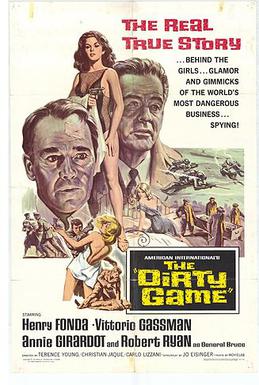
The Dirty Game is a 1965 anthology spy film starring Henry Fonda, Vittorio Gassman, Bourvil and Robert Ryan. Robert Ryan as American General Bruce is the link between three different spy stories, helmed by different directors; original James Bond director Terence Young and co-director Werner Klingler for the sequences in Berlin, Christian-Jaque for the French sequences, and Carlo Lizzani for the Italian sequences.

I am Sartana, Your Angel of Death is a 1969 Italian Western film directed by Giuliano Carnimeo and starring Gianni Garko as Sartana. The film is presented on some DVD reissues under its German title, Sartana - Töten war sein täglich Brot.
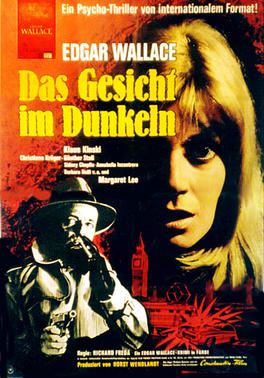
Double Face is a 1969 thriller film directed by Riccardo Freda and starring Klaus Kinski, Christiane Krüger and Annabella Incontrera. It is part of the series of Edgar Wallace adaptations made by Rialto Film.
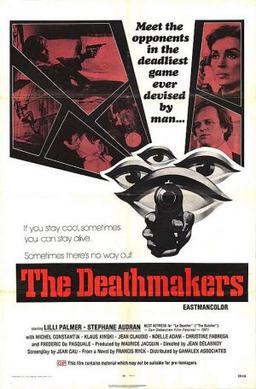
Children of Mata Hari is a 1970 international co-production crime film directed by Jean Delannoy and starring Klaus Kinski.

Churchill's Leopards is a 1970 Italian-Spanish "macaroni combat" war film directed by Maurizio Pradeaux and starring Richard Harrison and Klaus Kinski.
A Barrel Full of Dollars also known as Coffin Full of Dollars is a 1971 Italian Western film directed by Demofilo Fidani and starring Jack Betts.
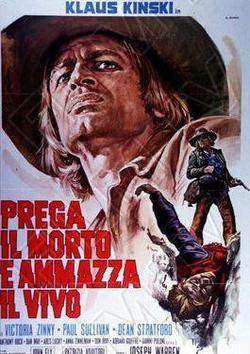
Shoot the Living and Pray for the Dead is the original release title of the 1971 Italian dramatic Spaghetti Western film directed by Giuseppe Vari, and starring Klaus Kinski and Dante Maggio. With its many international releases, the film had additional English titles of Pray to Kill and Return Alive, To Kill a Jackal, and Renegade Gun. The script by Adriano Bolzoni is inspired by American noir-crime films of the 1930s and 1940s, and Kinski's entry into the scene reprises Edward G. Robinson's presence in Key Largo (1948).

The Price of Death is a 1971 Italian Western film directed by Lorenzo Gicca Palli and starring Klaus Kinski and Gianni Garko. Some DVD releases use the title Der Galgen wartet schon, Amigo!.

Heroes in Hell is a 1974 Italian Macaroni War film written, directed and lensed by Joe D'Amato, produced by Walter Brandi and starring Klaus Kinski, Luciano Rossi and Franco Garofalo.

Jack the Ripper is a 1976 Swiss-German thriller film directed by Jesús Franco and starring Klaus Kinski as Jack the Ripper.
La femme enfant is a 1980 French drama film directed by Raphaële Billetdoux and starring Klaus Kinski. It competed in the Un Certain Regard section at the 1980 Cannes Film Festival.
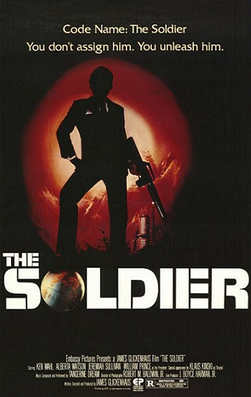
The Soldier is a 1982 American Cold War action-thriller film written, directed, and produced by James Glickenhaus The film stars Ken Wahl, Alberta Watson, William Prince, Joaquim de Almeida, and Klaus Kinski, that featured a cameo by rising country superstar George Strait. The film was shot on location in Philadelphia, Buffalo and New York City, New York, West Berlin, and Israel. The ski sequence was filmed in St Anton am Arlberg in Austria. The original score was composed and performed by the German electronic band Tangerine Dream.
Euro War, also known as Macaroni Combat, Macaroni War, Spaghetti Combat, or Spaghetti War, is a broad subgenre of war film that emerged in the mid-1960s. The films were named Euro War because most were European co-productions, most notably and commonly by Italians, as indicated by the subgenre's other nicknames that draw parallels to those films within the mostly Italian Spaghetti Western genre.

















